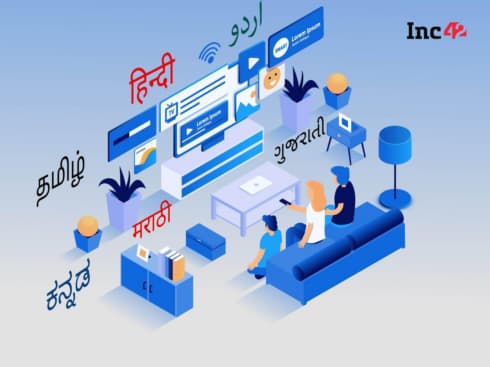
The fulfilment of the quick delivery promise relies on a dense finishing stations’ network, located in close proximity to high-demand customer neighbourhoods
Gurugram will become the first city to see the launch of Zomato Instant from April 2022, confirmed Zomato founder and CEO Deepinder Goyal
SKUs of the QCommerce will include food items that are readily-deliverable and do not require elaborate preparation
Zomato
According to the blog post, Gurugram will become the first city to see the launch of Zomato Instant with four stations set up initially, from next month onwards. Zomato is also planning to take the service to other metro cities by the end of 2022, a spokesperson told Inc42.
The development comes just a few days after it was reported that Zomato was in talks with several existing restaurant partners and cloud kitchens to roll out its ultra-fast 10-minute food delivery service. The report also mentioned that Zomato is likely to begin pilots from April starting with Gurugram.
Zomato had briefly piloted a quick food delivery plan in Bengaluru last year, where it aimed to deliver food within 15 minutes, and the model has served as a base for the current programme.
Modus Operandi Of Zomato Instant
According to Goyal, each of Zomato’s finishing stations, the backbone of Zomato Instant, will comprise some of the bestseller items, about 20-30 dishes from different restaurants based on demand predictability and hyperlocal preferences.
However, the food dishes would only comprise readily-deliverable items that do not require elaborate preparation, a spokesperson confirmed. Further, customers living in not more than a radius of 2 kms from the stations, would have access to the Zomato Instant food delivery service.
The foodtech giant would use demand prediction algorithms to better ensure a quick delivery. Zomato expects the demand predictability would also reduce the price for the customers. It further intends to ensure that the price margin and income of restaurant partners and delivery partners remains the same.
“After becoming a frequent customer of Blinkit [one of Zomato’s investments in the quick commerce space], I started feeling that the 30-minute average delivery time by Zomato is too slow, and will soon have to become obsolete,” read Goyal’s post. “If we don’t make it obsolete, someone else will.”
As came to the light in a major announcement last week, the online grocery unicorn Blinkit (formerly Grofers) is all set to merge with foodtech giant Zomato in a share-swap deal. Last week, Zomato also approved a $150 Mn loan Blinkit. Zomato had initially invested $120 Mn in Blinkit in June last year.
Blinkit competes with the likes of Swiggy’s Instamart, BigBasket, Dunzo in the quick commerce space, while companies like Amazon and Flipkart are also experimenting with quick deliveries of grocery and household items.
Rising Concerns For Delivery Partners Among Users
With the boom of QCommerce in India, Zomato Instant seems to be a step ahead for Zomato in terms of instant services that the company and its peers in the delivery segment offer.
When Grofers rebranded itself to BlinkIt and launched the 10-minute delivery programme, it received a lot of criticism alleging mistreatment and harassment of delivery partners. Talking to Inc42, Zomato spokesperson said that the roll-out of the Instant programme is unlikely to directly affect the hiring of delivery partners.
However, the instant delivery service has repeatedly evoked questions about the safety of delivery partners on road. Perhaps, the announcement of Zomato Instant is further going to strengthen the safety question as well include the pay disparity, despite drivers being subjected to taking more risks, bending the traffic rules and riding against the clock.
Meanwhile, Goyal has once again maintained that Zomato does not put any pressure on delivery partners to deliver food faster, and the delivery partners are not penalised for late deliveries. In fact, he claimed that the delivery partners are not informed of the promised time of delivery.
Looking Into Zomato’s Performance
Zomato reported a 78% year-on-year (YoY) growth of adjusted revenue to INR 1,420 Cr ($190 Mn) in Q3 FY22. Its Gross Order Value (GOV) grew by 84.5% YoY to INR 5,500 Cr ($733 Mn) in the quarter.
Zomato posted a loss after tax of INR 67.2 Cr between October and December of 2021, on the back of INR 1,112 Cr revenue from its operations and INR 147.7 Cr from its other sources.
In Q3 of FY22, Zomato had acquired 5.5 Mn new active users, a rise from 3.2 Mn new users in Q2 FY22. Zomato’s average monthly transacting users stood at 15.3 Mn, an almost 2X rise from 8.4 Mn. Its average monthly active delivery partners too increased to 296 Mn in Q3 of FY22 from 141 Mn in Q3 of FY21.
In its quarterly report in November 2021, the foodtech startup outlined the need for the foodtech to focus on its core businesses viz., food ordering and delivery, dining-out, and B2B supply chain biz, Hyperpure.
Thus, Zomato has shut down all of its international businesses. For a long term play in auxiliary segments, the startup is looking to back D2C startups in partnership with Shiprocket — a move similar to its backing grocery startup Grofers.
However, its competition is increasing with time. After Zomato’s listing, its arch-rival Swiggy is also heading for an IPO. According to recent reports, Swiggy has hired JP Morgan and I-Sec ahead of its imminent IPO worth about $1 Bn.
In a bid to compete with Zomato’s dine-in business, Swiggy is also in talks to acquire Times Internet-owned Dineout in a deal worth $200 Mn.
Zomato’s shares have plummeted about 40% since its IPO in July 2021, closing at INR 80.40 on March 21, 2022.































 Ad-lite browsing experience
Ad-lite browsing experience